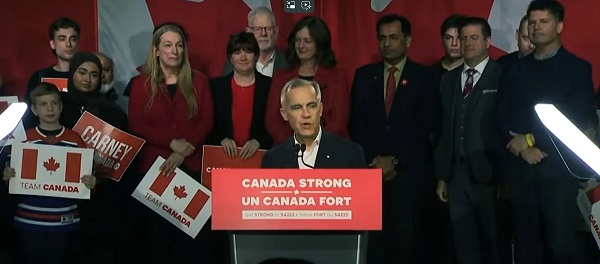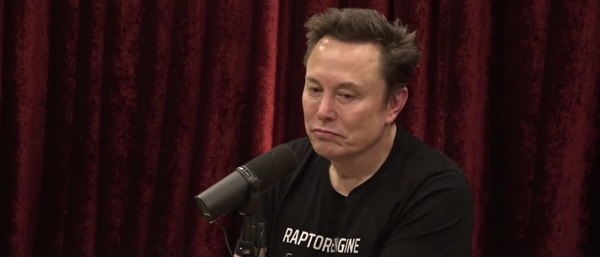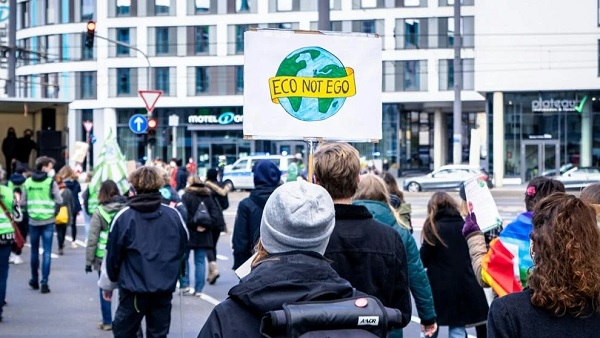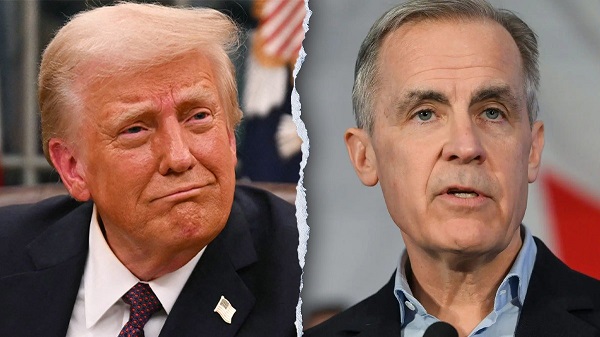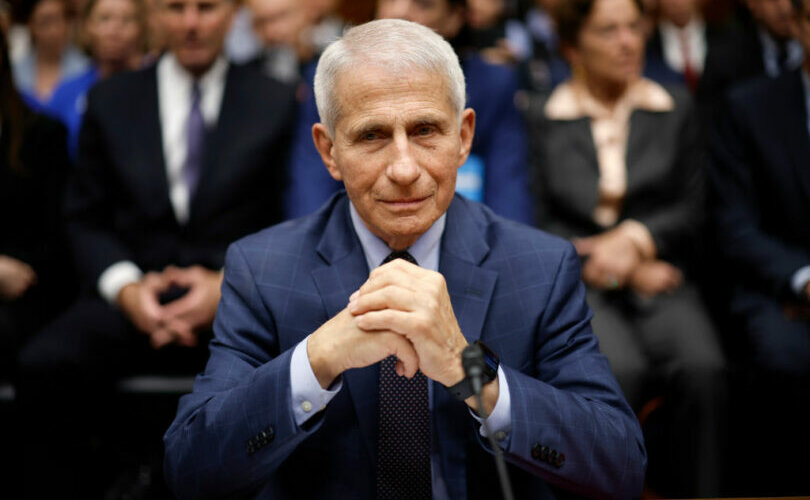Business
Feds move target for net-zero grid back 15 years. Western provinces say it’s not of their business
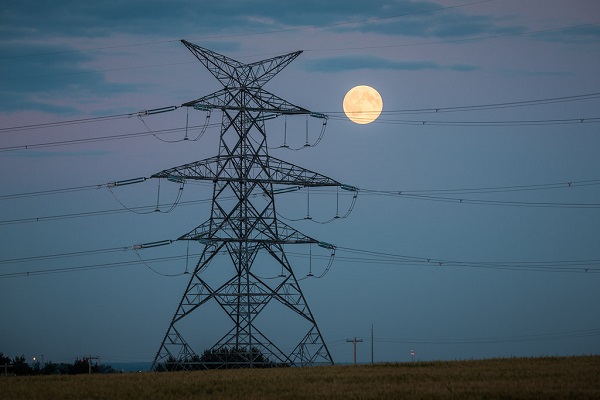
From Resource Works
“These latest measures fail to recognize provinces have jurisdiction over the development and management of electricity. The federal regulations are duplicative, inefficient, and add to costs.”
The federal government has clarified its clean-energy goal for a net-zero power grid.
Its final Clean Electricity Regulations target a net-zero grid across the country by 2050. But didn’t Ottawa previously, in August 2023, set a goal of 2035?
Certainly, one leading environmental group declared: “The federal government has committed to achieving zero-emissions electricity by 2035.”
And a law firm that analyses energy matters told followers in August 2023: “Government of Canada releases draft Clean Electricity Regulations aimed at achieving net-zero emissions from Canada’s electricity grid by 2035.”
What Ottawa said in August 2023 was this: “The proposed regulations would set performance standards that would ensure that the sector achieves significant transformation by 2035, so that a robust foundation of clean electricity is available to power the electric technologies (e.g., electric transportation) needed to support Canada’s transition to a net-zero GHG emissions economy by 2050.”
Announcing that 2035 goal was a case of fuzzy wording, according to Energy Minister Jonathan Wilkinson. He said Ottawa could have been more precise in its language and context around what exactly the 2035 target referred to.
He now says: “2035 was really having a plan as to how you were going to reduce emissions to be able to get to a net-zero economy by 2050… Perhaps we were not as precise with our language as we should have been.”
Environment Minister Steven Guilbeault issued an update in February 2024: “All G7 countries, including Canada and the United States, have committed to transitioning to a net-zero electricity grid as a foundational measure to help achieve low-carbon economies by 2050.”
And he now says: “We knew from the get-go, from where we are to where we need to be, we couldn’t get there in 10 years… It was always our intention that we want to see things happening before 2035. But that we wouldn’t be able to get to a decarbonized grid before 2050.”
Whatever they said, meant, clarified, updated, and/or corrected, the new regulations face opposition and a court challenge from Alberta, for one.
Premier Danielle Smith criticized the latest regulations as unconstitutional, arguing they seek to regulate an area of provincial jurisdiction.
“After years of watching the federal government gaslight Canadians about the feasibility of achieving a net-zero power grid by 2030, we are gratified to see Ottawa finally admit that the Government of Alberta’s plan to achieve a carbon-neutral power grid by 2050 is a more responsible, affordable, and realistic target.
“That said, the federal government’s finalized electricity regulations remain entirely unconstitutional as they seek to regulate in an area of exclusive provincial jurisdiction. They also require generators to meet unreasonable and unattainable federally mandated interim targets beginning in 2035, which will still make electricity unaffordable for Canadian families.
“Alberta will therefore be preparing an immediate court challenge of these electricity regulations.”
Saskatchewan’s government said in a news release that it will simply not comply with the new regulations.
“Our government unequivocally rejects federal intrusion into our exclusive provincial jurisdiction over the electricity system.
“Saskatchewan will prioritize maintaining an affordable and reliable electricity grid to support our regional needs and growth. The federal Clean Electricity Regulations are unconstitutional, unaffordable, unachievable, and Saskatchewan cannot, and will not, comply with them.”
The Business Council of BC slammed the new federal regulations on multiple grounds: constitutionality, jeopardizing the reliability of electricity delivery, higher costs for businesses and households, limiting investment, regional inequities, technological limitations, and risks to greenhouse-gas management.
“These latest measures fail to recognize provinces have jurisdiction over the development and management of electricity. The federal regulations are duplicative, inefficient, and add to costs.”
And: “It is important to recognize that Canada’s combined electricity systems are already 84% non-emitting, and that electricity represents less than 10% of Canada’s total emissions. The sector has made more progress in reducing emissions than any other sector in the country over the past two decades.
“We urge the government to set aside these new regulations and work collaboratively with the electricity sector to develop a more balanced approach that respects provincial roles and will not risk undermining investment and driving up costs. The path to a cleaner energy system requires cooperation, not regulation.”
The latest announcement from Ottawa includes these statements:
- “Federal analyses find that the Regulations have no impact on electricity rates for the vast majority of Canadians, and in some cases, will even have a slightly positive impact on rates. Independent third-party expert modelling substantiates federal analysis that the Regulations are feasible.
- “To ensure rates are affordable for Canadian families over the coming decade, the federal government is investing $60 billion to support the electricity sector.
- “The adoption of efficient electric appliances, vehicles, and heat pumps presents an enormous opportunity for families to save money on their energy bills.
- “In the shift to clean electricity, 84% of households are expected to spend less on their monthly energy costs, when accounting for the over $60 billion in federal clean electricity incentives. This could lead to $15 billion in total energy-related savings for Canadians by 2035.”
All subject to clarification, updating, and/or correction—and Alberta’s promised court case.
2025 Federal Election
Canada drops retaliatory tariffs on automakers, pauses other tariffs

 MxM News
MxM News
Quick Hit:
Canada has announced it will roll back retaliatory tariffs on automakers and pause several other tariff measures aimed at the United States. The move, unveiled by Finance Minister François-Philippe Champagne, is designed to give Canadian manufacturers breathing room to adjust their supply chains and reduce reliance on American imports.
Key Details:
- Canada will suspend 25% tariffs on U.S. vehicles for automakers that maintain production, employment, and investment in Canada.
- A broader six-month pause on tariffs for other U.S. imports is intended to help Canadian sectors transition to domestic sourcing.
- A new loan facility will support large Canadian companies that were financially stable before the tariffs but are now struggling.
Diving Deeper:
Ottawa is shifting its approach to the escalating trade war with Washington, softening its economic blows in a calculated effort to stabilize domestic manufacturing. On Tuesday, Finance Minister François-Philippe Champagne outlined a new set of trade policies that provide conditional relief from retaliatory tariffs that have been in place since March. Automakers, the hardest-hit sector, will now be eligible to import U.S. vehicles duty-free—provided they continue to meet criteria that include ongoing production and investment in Canada.
“From day one, the government has reacted with strength and determination to the unjust tariffs imposed by the United States on Canadian goods,” Champagne stated. “We’re giving Canadian companies and entities more time to adjust their supply chains and become less dependent on U.S. suppliers.”
The tariff battle, which escalated in April with Canada slapping a 25% tax on U.S.-imported vehicles, had caused severe anxiety within Canada’s auto industry. John D’Agnolo, president of Unifor Local 200, which represents Ford employees in Windsor, warned the BBC the situation “has created havoc” and could trigger a recession.
Speculation about a possible Honda factory relocation to the U.S. only added to the unrest. But Ontario Premier Doug Ford and federal officials were quick to tamp down the rumors. Honda Canada affirmed its commitment to Canadian operations, saying its Alliston facility “will operate at full capacity for the foreseeable future.”
Prime Minister Mark Carney reinforced the message that the relief isn’t unconditional. “Our counter-tariffs won’t apply if they (automakers) continue to produce, continue to employ, continue to invest in Canada,” he said during a campaign event. “If they don’t, they will get 25% tariffs on what they are importing into Canada.”
Beyond the auto sector, Champagne introduced a six-month tariff reprieve on other U.S. imports, granting time for industries to explore domestic alternatives. He also rolled out a “Large Enterprise Tariff Loan Facility” to support big businesses that were financially sound prior to the tariff regime but have since been strained.
While Canada has shown willingness to ease its retaliatory measures, there’s no indication yet that the U.S. under President Donald Trump will reciprocate. Nevertheless, Ottawa signaled its openness to further steps to protect Canadian businesses and workers, noting that “additional measures will be brought forward, as needed.”
Business
DOGE Is Ending The ‘Eternal Life’ Of Government
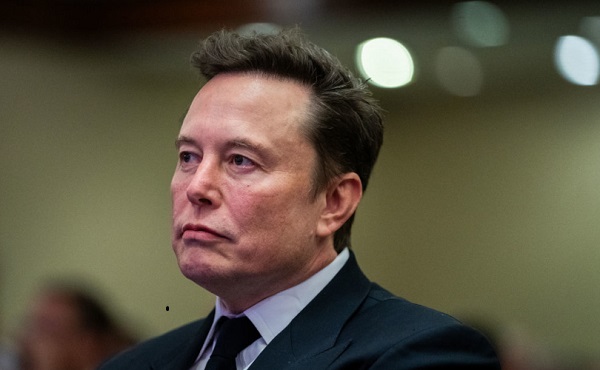

From the Daily Caller News Foundation
By David Bossie
In his 1964 “A Time For Choosing” speech, Ronald Reagan famously said, “a government bureau is the nearest thing to eternal life we’ll ever see on this earth.” And for more than 60 years, President Reagan’s words have proven to be true. However, with the historic re-election of President Donald Trump and the creation of the Department of Government Efficiency (DOGE) under the leadership of Elon Musk, the Gipper’s contention is finally being challenged – and not a moment too soon.
The Trump Administration inherited a horribly bloated federal government in dire need of common sense streamlining from top to bottom. For decades, the executive branch has expanded at an incomprehensible rate and along with it, so has waste, fraud, and abuse. Presidents on both sides of the aisle have made promises to tighten the government’s belt, shrink the bureaucracy, and return power to the people where it belongs. Those efforts for the most part – however well-intentioned – never got off the ground. The reality is that when politicians have been forced to choose between a legislative priority and cutting government spending, cuts are always the first casualty. But currently, with our $36 trillion national debt spiraling out of control, reining in the size and scope of government is no longer a choice, but a necessity.
President Trump is the perfect leader for these trying times. He’s battletested and fears nothing – and no challenge is too large. Whether it’s securing the border, growing the economy, forging peace in Ukraine and the Middle East, or negotiating fair trade deals, this president is on a mission to save America. And if any chief executive is going to have success at deconstructing the administrative state, it’s Trump the steel-spined change agent. The shadowy deep state doesn’t scare him, the biased liberal media can’t intimidate him, and this time there are no phony partisan investigations aiming to sidetrack him. Trump made a promise to bring fiscal responsibility back to governing, and along with Musk and DOGE, they’re finally conducting the “audit with teeth” that the American people have been waiting for, and their hard work is turning out to be infectious.
Dear Readers:
As a nonprofit, we are dependent on the generosity of our readers.
Please consider making a small donation of any amount here. Thank you!
With each passing day, a different member of the cabinet is announcing a new cut, discovering a duplicative program, or updating an antiquated system to steer us away from the fiscal cliff that’s rapidly approaching. When the president also happens to be a highly successful businessman, making the business operate more smoothly and for less money is the name of the game. Trump has brought this mindset to the White House and according to recent polling 77 percent favor a full review of government spending.
President Trump is going back to the basics that have become taboo in Washington, like asking fundamental questions about whether an agency has been successful in its mission or if a program is still necessary. In the case of the Education Department, Trump sees an emergency and is not willing to kick the can down the road any longer. The president believes that education excellence for our children is essential so America can compete for generations to come. Drastic reform is long overdue and that means moving education decisions back to state and local officials – and parents. That’s why President Trump is taking the steps to confront the failed status quo and close the underperforming department so we can turnaround lackluster public schools and low-test scores.
Similarly, with the decision to end USAID and slash foreign aid, Trump and DOGE are simply putting America first. America is handing out billions upon billions in taxpayer dollars around the globe on programs that should be spent on fixing our own domestic problems. The plan to decentralize and modernize the Agriculture Department is another great example of thinking outside the box. The American people understand the rationale that downtown Washington, D.C. is the last place decisions about farming should be made. Relocating the department to various hubs around the heartland is common sense.
Additionally, the announcement that the Department of Health and Human Services will cut 20,000 full-time employees is part of President Trump’s vision to “right-size the federal government and unleash the private sector again” in the words of Treasury Secretary Scott Bessent. And word that the Trump Administration is planning to work with Congress to finally defund National Public Radio and the Public Broadcasting Service is welcome news to millions of Americans who believe sending taxpayer funds to biased news outlets is wrong.
DOGE is also doing courageous work at the Social Security Administration (SSA). The amazing efforts to identify individuals who are either deceased, in the country illegally, or otherwise ineligible will help stave off the program’s insolvency, which experts predict is only ten years away. When a DOGE official disclosed that 40 percent of the calls made to SSA are from would-be fraudsters trying to exploit the system, it’s become all too obvious that new safeguards must be adopted.
When it comes to the question of how much money DOGE will ultimately end up saving taxpayers, in the context of our $36 trillion debt crisis, the more the better. However, the overall change in mindset – forcing government to operate efficiently and responsibly like businesses and families – and passing that mindset onto future administrations is perhaps the most critical shift that can be made. In fact, in an ideal scenario, every state, county, and city would have its very own DOGE operation. We must get serious about cutting government waste now or we’ll go bankrupt. That’s just the reality of the situation and President Trump knows it.
David Bossie is the president of Citizens United and served as a senior adviser to the Trump-Pence 2020 campaign. In 2016, Bossie served as deputy campaign manager for Donald J. Trump for President and deputy executive director for the Trump-Pence Transition Team.
-
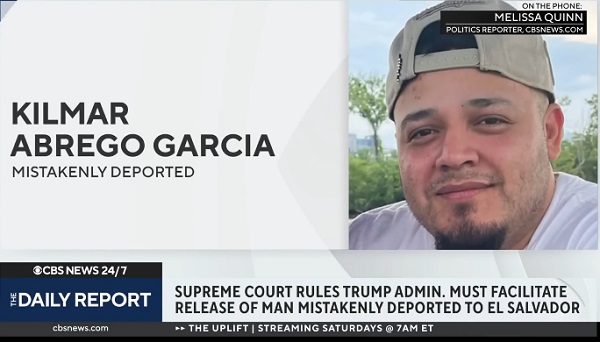
 illegal immigration2 days ago
illegal immigration2 days agoDespite court rulings, the Trump Administration shows no interest in helping Abrego Garcia return to the U.S.
-
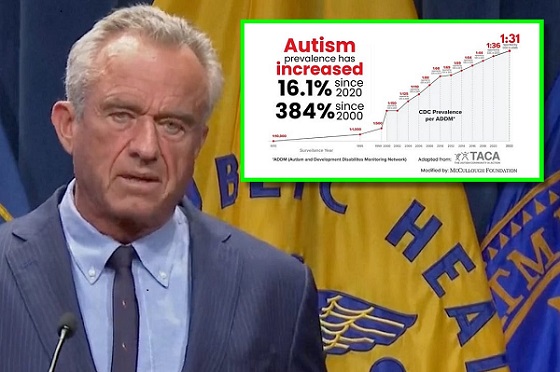
 Autism20 hours ago
Autism20 hours agoRFK Jr. Exposes a Chilling New Autism Reality
-
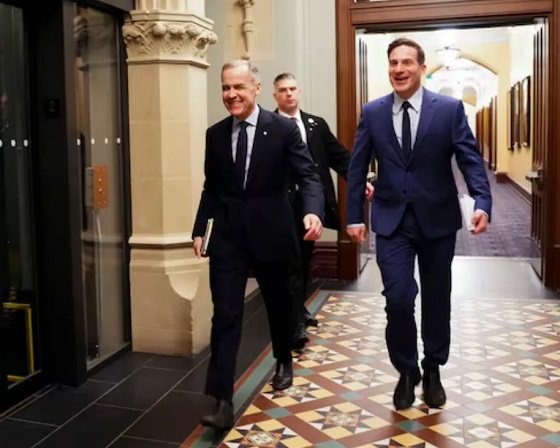
 2025 Federal Election24 hours ago
2025 Federal Election24 hours agoRCMP Whistleblowers Accuse Members of Mark Carney’s Inner Circle of Security Breaches and Surveillance
-
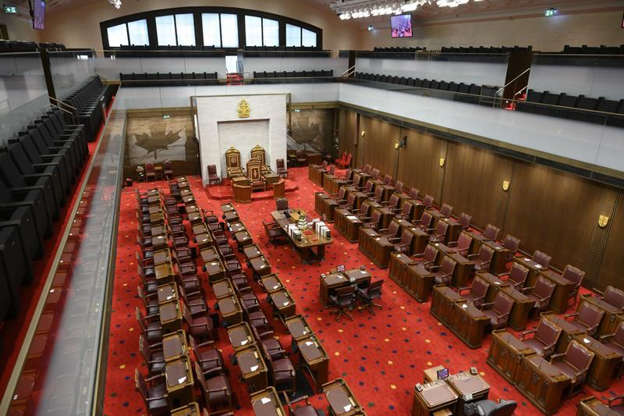
 2025 Federal Election23 hours ago
2025 Federal Election23 hours agoBureau Exclusive: Chinese Election Interference Network Tied to Senate Breach Investigation
-
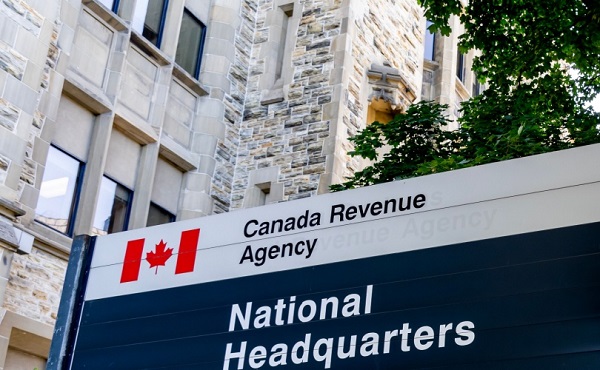
 2025 Federal Election2 days ago
2025 Federal Election2 days agoConservative MP Leslyn Lewis warns Canadian voters of Liberal plan to penalize religious charities
-
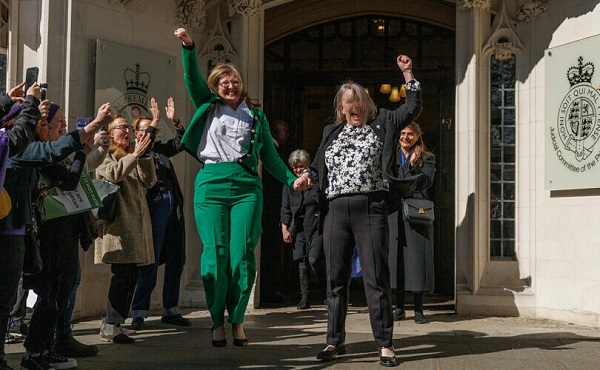
 International19 hours ago
International19 hours agoUK Supreme Court rules ‘woman’ means biological female
-

 Education2 days ago
Education2 days agoSchools should focus on falling math and reading skills—not environmental activism
-
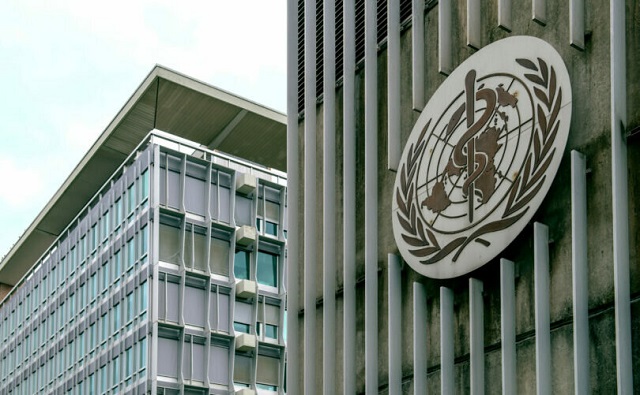
 Health19 hours ago
Health19 hours agoWHO member states agree on draft of ‘pandemic treaty’ that could be adopted in May



